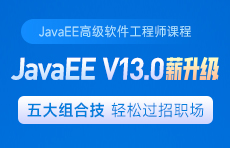Java中实例化对象有哪几种方式?
更新时间:2023年04月03日11时15分 来源:传智教育 浏览次数:

在Java中,可以使用以下几种方式实例化对象:
1.使用new关键字直接实例化对象:
// 创建一个Person对象 Person person = new Person();
2.使用Class类的newInstance()方法动态创建对象:
// 获取Person类的Class对象 Class<Person> personClass = Person.class; // 使用newInstance()方法创建Person对象 Person person = personClass.newInstance();
3.使用Constructor类的newInstance()方法动态创建对象:
// 获取Person类的Constructor对象 Constructor<Person> personConstructor = Person.class.getConstructor(); // 使用newInstance()方法创建Person对象 Person person = personConstructor.newInstance();
4.使用clone()方法克隆一个已有的对象:
// 创建一个Person对象 Person person1 = new Person(); // 克隆一个新的Person对象 Person person2 = (Person)person1.clone();
5.反序列化一个对象:
// 将对象序列化到文件中
ObjectOutputStream outputStream = new ObjectOutputStream(new FileOutputStream("person.ser"));
outputStream.writeObject(person);
outputStream.close();
// 反序列化对象
ObjectInputStream inputStream = new ObjectInputStream(new FileInputStream("person.ser"));
Person person = (Person)inputStream.readObject();
inputStream.close();
其中,第2种和第3种方式都是使用Java的反射机制来动态创建对象的。在使用反射创建对象时,需要注意异常的处理。



















 AI智能应用开发
AI智能应用开发 鸿蒙应用开发
鸿蒙应用开发 HTML&JS+前端
HTML&JS+前端 Python+大数据开发
Python+大数据开发 人工智能开发
人工智能开发 跨境电商
跨境电商 电商视觉设计
电商视觉设计 软件测试
软件测试 新媒体+短视频
新媒体+短视频 集成电路应用开发
集成电路应用开发 C/C++
C/C++ 狂野架构师
狂野架构师 IP短视频
IP短视频





















